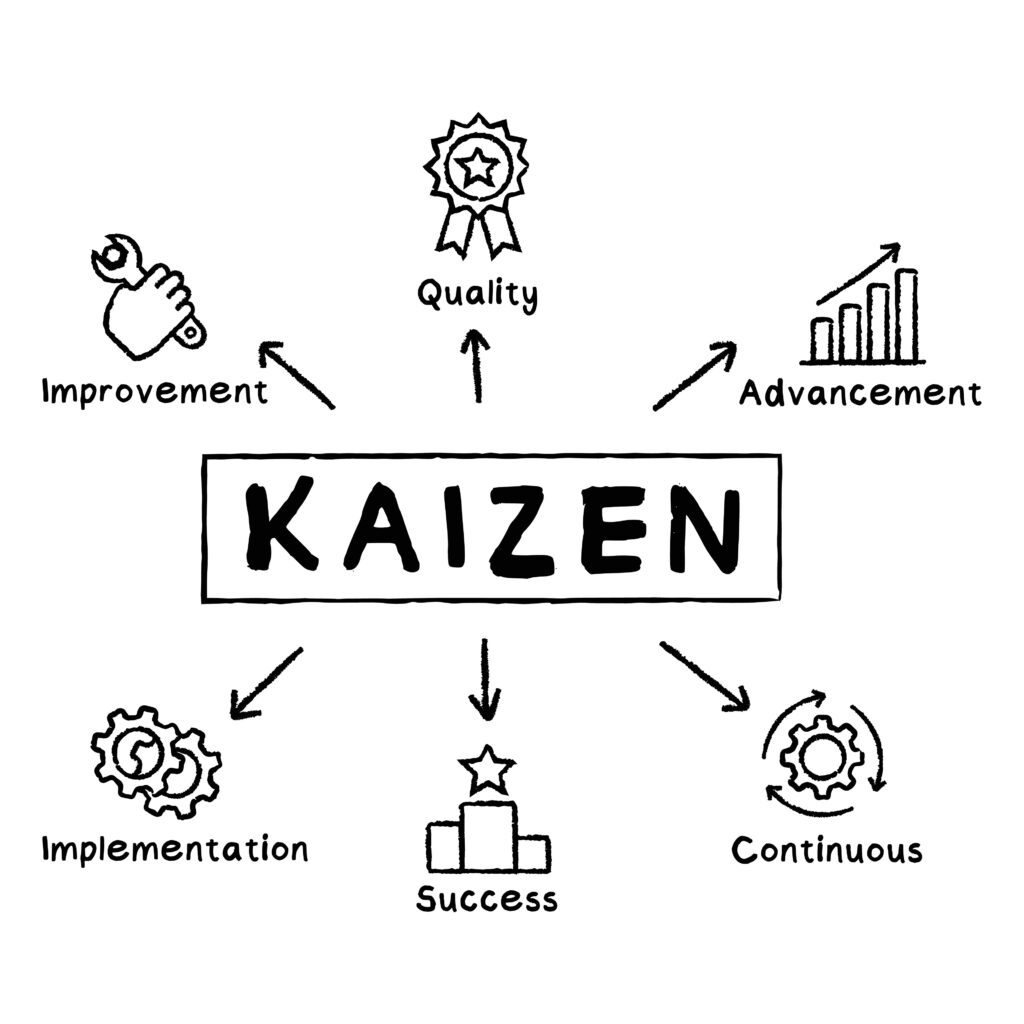Investing in Kaizen (aka Continuous Improvement)

By Michelle Voznyuk, Marketing Specialist at Heinz Marketing
As the end of the year quickly approaches, you’re probably deep in planning for 2023. But equally important as looking forward to and preparing for next year is reflecting on the year behind us. There’s a lot that can be learned in retrospect. Identifying what went well, what didn’t go well, and what could be improved are all essential to preventing roadblocks and achieving future success.
One way to process this information is to harness the power of “kaizen”. Kaizen is a Japanese term meaning “change for the better or continuous improvement” (source). In the current economic downturn, it’s critical to continue investing time and resources into continually evolving as an organization. Failing to do so will only hold you back from being able to compete in an already difficult market.
The kaizen philosophy is really what you make it. It can involve a variety of ideas and activities, aimed at creating a better environment and operating system. This could include increasing efficiency, creating more standardization, and investing in employee engagement and retention.
The process of kaizen should be open and collaborative. Ideas of how to improve the organization do not always need to come from leadership – anyone can propose an idea for improvement. Allowing for this type of engagement helps employees feel heard and increases ownership in making positive change happen.
At the end of the day, the concept of kaizen is about “making small, incremental, positive changes, and building on those successes” (source). Each step in the learning process is a piece to a larger puzzle.
That being said, you might be wondering: what does this look like practically? Great question!
A way we’re currently implementing kaizen in our own organization is by reviewing our core, foundational processes. Our goal is to remove waste by addressing challenges, updating necessary templates, and creating greater efficiency overall. To make this happen, we’ve outlined the following activities as a roadmap for getting us there.
|
Step |
Session Length |
Tactic |
Participants |
|
1 |
2 hours |
Map current process from end-to-end, including timing for each step and team member responsible |
Kaizen team |
|
1.5 |
N/A |
Collect feedback from individual teams |
Whole org |
|
2 |
2 hours |
Analyze current process and brainstorm improvements |
Kaizen team |
|
3 |
2 hours |
Map ideal future process and include recommendations from previous session |
Kaizen team |
|
4 |
1 hour |
Outline next steps and dependencies required to go from current to future state |
Kaizen team |
|
4.5 |
N/A |
Collect feedback from individual teams |
Whole org |
|
5 |
1 hour |
Plan timeline for rollout |
Kaizen team |
|
6 |
1 hour |
Present final plan to team |
Whole org |
This is only a sample of how you can use kaizen in your organization. Rather than getting caught up in the details, it’s important to remember the “why” behind kaizen. Investing in continuous improvement and positive change not only allows you to run more effectively, but can also boost employee satisfaction, enhance relationships with customers, improve retention rates, increase cost savings, and more.
I hope you found this information helpful as you reflect on the year and continue planning for next. As always, if you need help improving your sales and marketing processes, feel free to reach out! We’d love to have a conversation with you.







